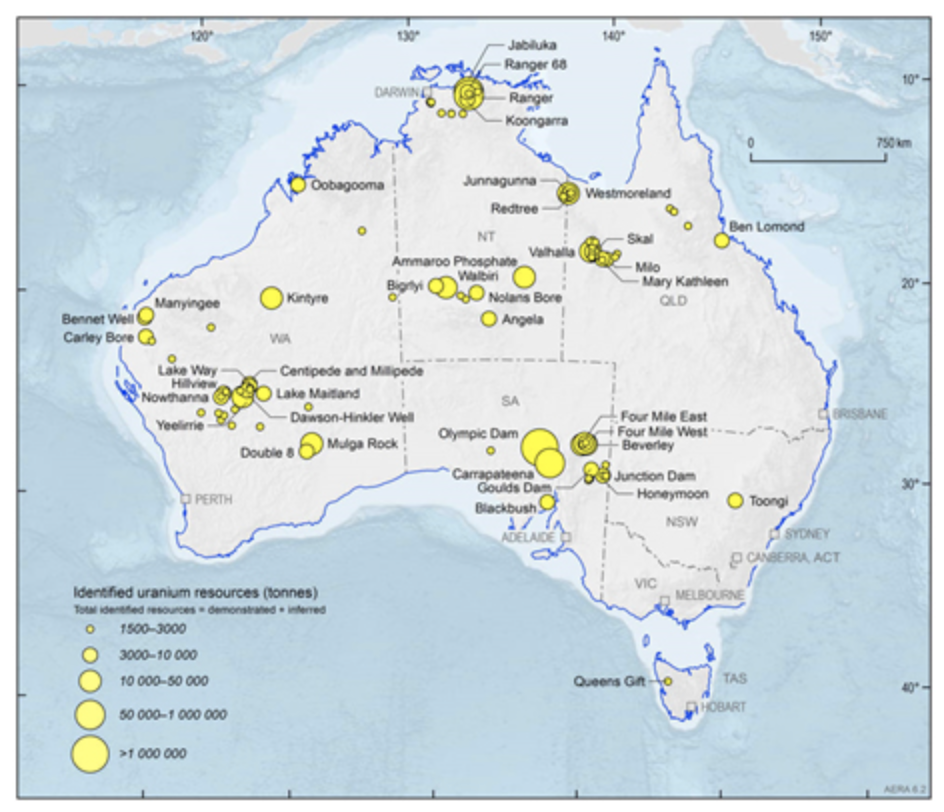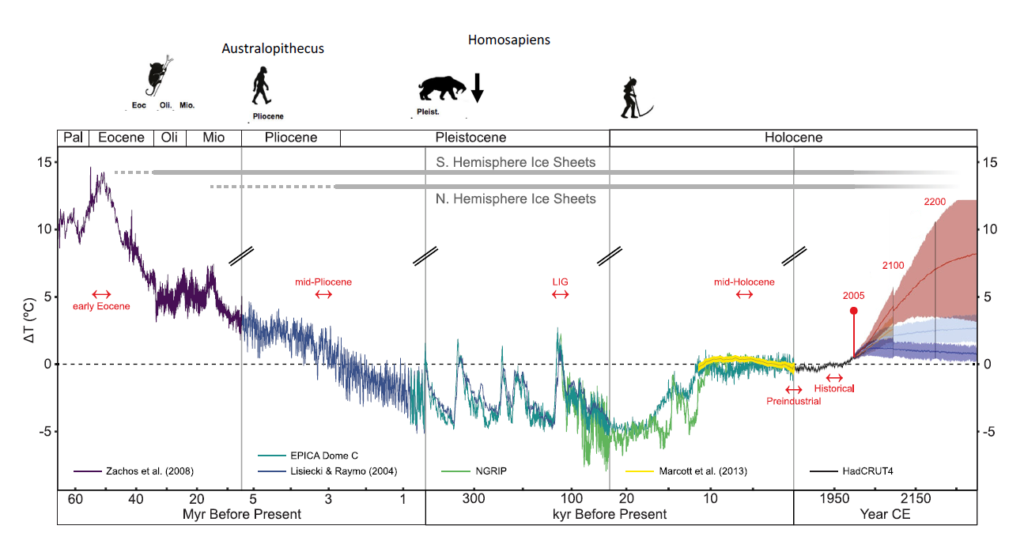Lambert School Grade 9/10 Science

Our Questions
This is an excellent question and there are many possible answers. As you know, climate change itself can be described as a “wicked problem” for which there is no one “correct” solution.
It’s certainly possible to switch power sources from fossil fuels to renewable energy – especially wind and solar – and with the right incentives and policy from government. Importantly, we can do so quite quickly which is exactly what is now needed. We can do this both on a small scale (eg: solar panels on rooftops) to a larger scale (eg: vast solar and wind farms). In Australia, we are particularly lucky to have excellent conditions for generating renewable power: plenty of sun and wind, and space for solar and wind farms.
We can also use wind and solar, and also existing hydroelectric energy generation, to help manufacture what’s known as “green” hydrogen as an emissions-free fuel. Making hydrogen needs lots of electricity, but if we use electricity from fossil fuels in this process, we don’t cut carbon dioxide emissions enough. Creating a green hydrogen industry is a really exciting opportunity, especially for Tasmania, as we may be able to export hydrogen to replace fossil fuels in manufacturing and heavy transport industry. For example, it’s currently being used in mining trucks instead of diesel. Take a look at this short video to help you understand more about green hydrogen.
You asked about side effects. One very positive side effect is that switching from fossil fuels to renewables will actually create jobs in Australia. Renewable energy could employ as many as 44,000 Australian workers by 2025. Of course, people who currently work in the fossil fuels industries would need to transition jobs, and this would need to be done in such a way that is fair to those workers. Some reports forecast that there could be 250,000 additional jobs in Australia by 2070 if the transition to a renewable economy is managed well.
Another positive side effect of moving away from fossil fuels will be cleaner air. Burning fossil fuels produces carbon dioxide, which is bad for the climate, but also produces pollutants such as sulphur dioxide, nitrogen dioxide and very fine particles which can play havoc with our respiratory and cardiovascular systems. A recent study showed that Australia could save $6 billion a year on health costs if we stopped burning fossil fuels.
In terms of negative side effects, one important one is that our transition to a renewable energy future will still have significant environmental impacts. Vast wind turbines need huge amounts of steel and copper, solar panels need rare earth minerals and batteries need lithium. All of these need to be mined from the earth, often with extremely damaging environmental consequences and impacts on biodiversity. So we need to remember that all consumption, even renewable energy consumption, has an impact on our planet. If we can consume less – particularly those of us in developed countries – and move towards a circular economy where what we extract from the earth is used and re-used, our transition to a decarbonised world will also mean a healthier and fairer environment for all.
We use carbon accounting to measure or estimate the emissions produced by different emissions sources or activities, such as driving a car or using a computer. Emissions can be direct or indirect. For example, driving a car produces direct emissions from the use of fuel by the car, while using a computer produces indirect emissions from the use of electricity generated at a coal-fuelled power station. Similarly, a piece of paper has associated indirect emissions from the production and transport of the product.
Some emissions are easier to calculate than others. For example, the Australian government provides emission factors to calculate emissions from the use of fuel in vehicles or natural gas at home, as well as electricity. An emission factor is a number that allows you to convert activity data (such as volume of fuel used, or weight of waste generated) into emissions. Emission factors that are relevant to a specific country or region might not be available for all sources of emissions.
There are several online calculators that may help you to calculate emissions from various sources. Some examples are the Carbon Footprint Calculator For Individuals And Households or the ClimateHero Carbon Calculator.
ClimateClever is another app that allows both households and businesses to calculate their carbon emissions, and then suggests ways to reduce these emissions. You can see how this kind of carbon accounting app works here:
What an excellent and timely question: there has been a lot of discussion about nuclear power in the media recently. Also, Australia’s new plan to get to net zero emissions by 2050 does not rule out including nuclear power in this country’s future energy mix. So it’s an important time to be thinking and talking about nuclear.
Nuclear energy is used to generate electricity in 30 countries around the world, and provides about a tenth of the world’s energy needs. Nuclear power needs uranium, and the planet has uranium resources sufficient to fuel existing demand for more than 130 years. Nuclear power does not cause direct greenhouse gas emissions, which is good when we are thinking about climate change, however, the waste from nuclear power generation is problematic. It remains radioactive potentially for thousands of years and needs to be carefully stored under very controlled conditions in order not to pose a danger to humans and the environment.
Could Australia develop nuclear power? Currently the answer is no. That’s because Australian law currently prohibits the approval and construction of nuclear power plants and the enrichment of uranium needed for nuclear power. Could Australia develop nuclear power in the future as part of an effort to reduce greenhouse gas emissions? Australia does have a lot of uranium, in fact, it supplies about one third of the total world demand for uranium.

The problem with nuclear for Australia as part of the effort to reduce emissions this decade is quite simple: it’s too slow, and too expensive.
How is it too slow? The timeframe to build a nuclear power station is at least 10-12 years. If we started to build a nuclear power capacity in Australia right now (and remember, the law currently prohibits it) it would not be operational until the early-mid 2030s. Science tells us we need to cut emissions right now, this decade.
How is it too expensive? Despite our domestic reserves of uranium, nuclear is by far the most costly energy for Australia to generate, as you can see from the illustration below.

Comparison of power generation technology cost estimates. Source: CSIRO Gen Cost 2019-2020
If we were to build nuclear power capacity in Australia, starting today, the cost of renewables like wind and solar would be much less even than it is today by the time we were able to generate any nuclear power.
So we might pursue building nuclear power in Australia if we had no other alternatives, but we are lucky to have some of the most plentiful solar, wind and particularly offshore wind resources in the world. So renewables like wind and solar, backed up by hydroelectricity, batteries, and new fuels like green hydrogen, will be a faster and cheaper way to decarbonise than turning to nuclear power.
This is a very good question. Climate has always changed. The problem is that now human actions are changing the climate in ways that it would not have changed under just natural conditions. Through increasing greenhouse gases in the atmosphere, humans have increased Earth’s temperature very rapidly. Rapidly increasing temperatures mean that fire seasons are getting longer, so large-scale fires are becoming ‘more normal’. Drought is also likely to become more common in some regions and floods more common in other regions. It is much harder time trying to understand what is likely to happen with rainfall compared with temperature, though. These rapid changes in climate mean many plants and animals don’t have time to adapt and many ecosystems are showing signs of collapsing. In many cases, these changes will also likely lead to an increase in ‘pest species’ (e.g. fruit fly).
The rate of temperature increase over the past 70 or so years has been alarming. Climate model projections suggest that in less than a century –if we continue doing what we are doing and don’t change –temperatures may be as high as they were millions of years ago.
The image below shows how temperature changed over geological time, from around 60 million years before today. In the image, Myr means millions of years and Kyr means thousands of years. The modern end shows how climate models suggest the temperature will change into the future up to 2250. Climate models use a lot of physics and maths and what we know about how climate works to project into the future. When scientists look at the models, they consider what global temperatures might look like if humans took slightly different courses of action:
- The dark blue line/band after 2020 shows what models suggest will happen to global temperatures if we made a really strong effort to severely limit our greenhouse emissions into the atmosphere.
- The light blue line/band shows what the models suggest will happen to temperature if we make some efforts to greenhouse gas emissions.
- The red line/band shows what the models suggest will happen to temperature if we keep doing what we’re doing.

At the moment, we really aren’t doing much to reduce greenhouse gas emissions that are making temperatures rise very quickly. This suggests that if we want to know what conditions might be like in 2200, we have to look all the way back to what is known as the ‘palaeocene-eocene thermal maximum’ around 50 million years ago. This was a period long before homo-sapiens (our own species) existed. Life on Earth was very very different. There were no ice caps and many of the ecosystems we see today didn’t exist. If, however, we take urgent action to address climate change, the ‘nearest’ similar climate is the Last Interglacial period (LIG in the diagram) which was ‘only’ around 126,000 years ago.
Conditions and life forms at either of these times were not like those we see today. If we change the climate to this extent, we will see some land (like a lot of Pacific islands and low lying coastal areas) disappear under water, terrible devastation of coastal cities (including in Australia and Tasmania), and much human suffering. We will also lose many important ecosystems on which we rely for food. As thing becomes much more difficult we can expect increased conflict as people fight over diminishing resources. So, climate change has really significant implications. Not just for humans, but all species currently on the planet. The pace of change means that the ability to adapt is limited for most species.
Thanks for asking this important question. In order to solve a problem, first, we must identify and define the problem.
Even though the science of global warming was discovered as far back as 1856, climate scientists only started to use the term ‘global warming’ in the 1980s. Global warming refers to the average global surface temperate increase caused by human emissions of greenhouse gases. Global warming is mainly understood as temperature rise, but it’s a bit more complicated than this. The warming leads to changes in weather patterns and air and water currents, which can mean that in a few places, colder weather is sometimes caused by global warming. The term confused some people, so scientists started to use a different term, ‘climate change’.
Climate change refers to the long-term change in the Earth’s climate. It is a more comprehensive term because it includes side effects of warming such as melting glaciers, heavier rain and storms, more frequent drought, frequent bushfires, changes in ocean circulations and ocean acidity. So climate change describes how weather patterns will be affected differently around the globe.
If you’d like to keep up with the latest news in climate science, scientists have started to use new terms:
Climate disruption, climate crisis and climate emergency are a few of these. The common feature of these terms is that the rising average global temperature has consequences (for example disruption) and requires urgent action. These terms may be more effective to get the message out because climate change action is urgent.
Tasmania is one of the marine global warming hotspots, which is big a challenge but also a potential opportunity for the Tasmanian fishing industry. Some important Tasmanian fisheries species might become less abundant and more vulnerable to climate extremes, but other species might benefit from warmer ocean and increase in abundance. Some fish species that are moving into Tasmanian waters already are or could become valuable fisheries species. The fishing industry can be sustainable if it adapts proactively, plans for the future and also supports marine protected areas to help improve resilience of fish populations. Actually, the Tasmanian fisheries industry is one of the few in the world that have conducted risk assessments, to see how climate change might affect them, and have already started some important adaptations (like actively fishing for a pesky urchin that has moved into Tasmania now that it is warm enough for it survive, but the urchin creates a problem by eating all the kelp habitat that lobsters need!).
One of the big questions for Tasmanian fisheries is how climate change will affect giant kelp forests. These forests are very important for fish and fisheries but are threatened by rising sea temperatures and the increasing sea urchin populations. Together with other management and fishing changes, marine protected areas could play an important role, as they help to rebuild the numbers of large fish and lobsters, which in turn keep the urchin numbers down.
You could read more about climate change adaptation research here.













